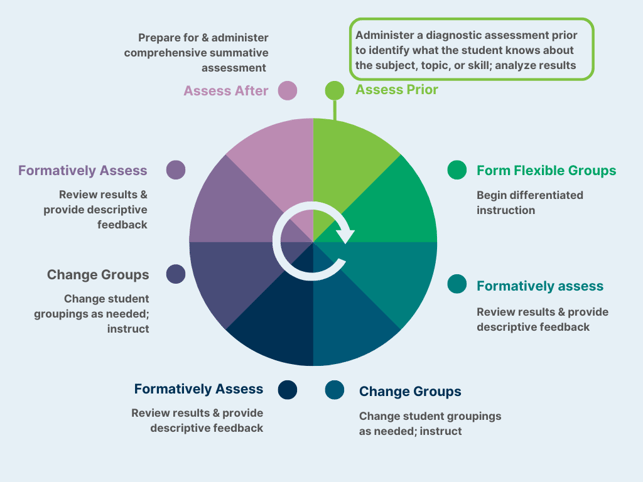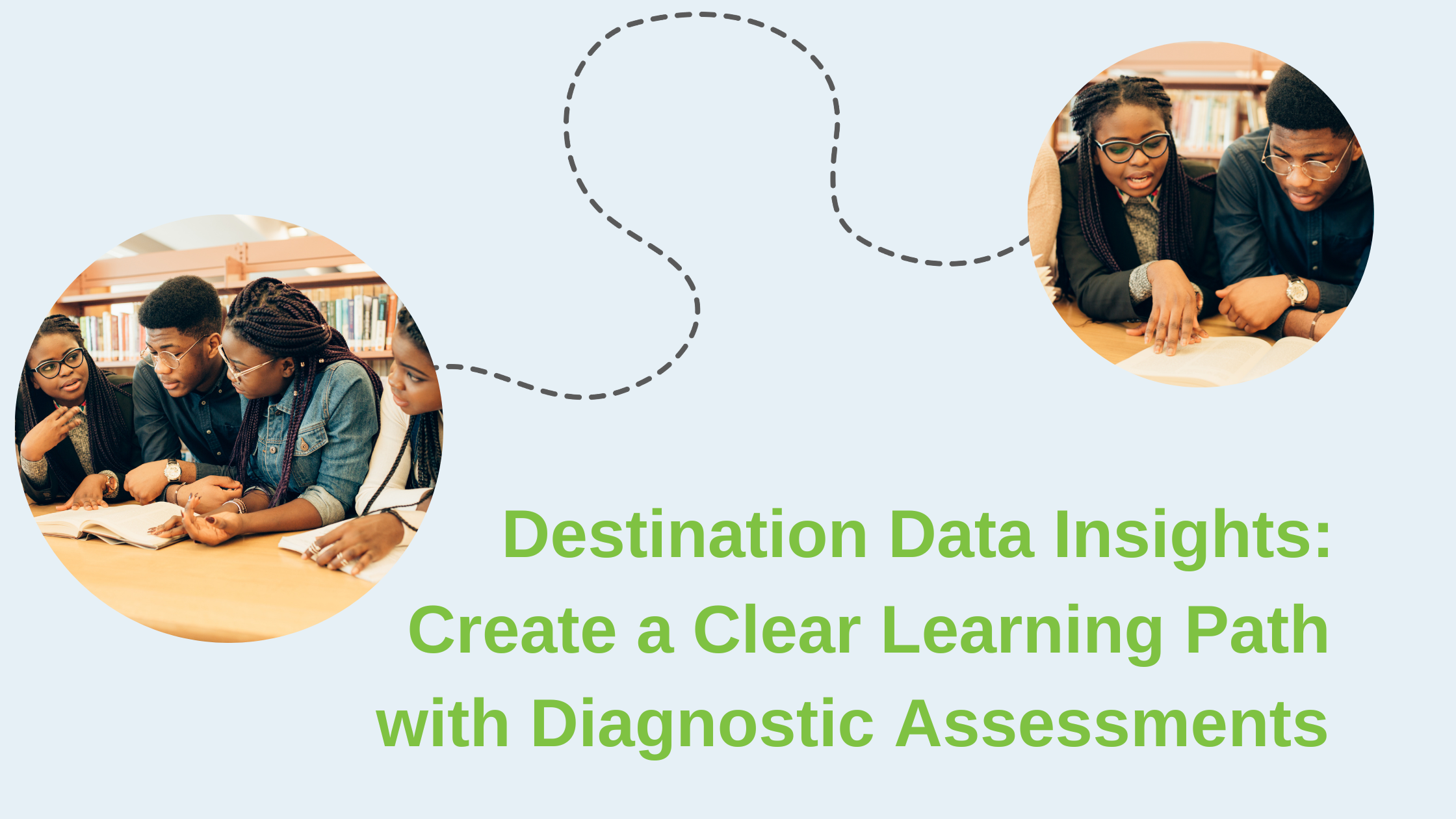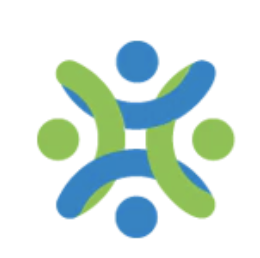
Destination Data Insights:
Create a Clear Learning Path with Diagnostic Assessments
I began my career in education teaching fifth grade, the final year of elementary school. Each September/October, the fifth grade teachers throughout the district administered the Iowa Assessments to our students to determine placement for middle school courses and to start the gifted and talented identification process. At the placement meeting in our school’s conference room each year, I remember looking at the provided Iowa Assessments report and being instructed to only compare the students’ National Percentile Rank (NPR) scores for each subject area to the district-identified placement cut score and ignore the other scores on the report. After the meeting, we filed the report in each student’s permanent record and returned to class, without further score discussion.
I wish I had known how much the data from the Iowa Assessments could change my classroom instruction if we leveraged it for more than student placement and the gifted identification process.
As a diagnostic assessment administered at the beginning of the year, the Iowa Assessments serve to identify what the student knows and is able to do in reading, math, ELA, science, & social studies, down to the specific skills assessed, all prior to instruction. Diagnostic assessments identify what a student knows about a topic before instruction begins; what did the student learn about the subject matter previously? What is the student ready to learn about the topic? Diagnostic assessments are designed to help teachers efficiently plan classroom instruction at the beginning of a unit or lesson.
.png?width=573&height=430&name=Diagnostic%20Assessment%20Infographic%20(1).png)
Knowing the purpose and meaning of each Iowa Assessments score for each individual student at the beginning of the year would have helped me immediately know which skills my students already mastered and which skills to target for upcoming instruction. The detailed insights would have helped me group students during the first weeks of school and spark ideas for data-driven instructional resources and activities. I also could use their diagnostic data to look back at their Iowa Assessments growth in comparison to this year and view the subject area trends.
Diagnostic assessments are very valuable to determine the student’s best learning path. Such assessments give students the opportunity to demonstrate what they already know and can do with assessed topics, standards, and skills. With the student’s responses from the assessment, the teacher can fast-track the student to new and extended learning where motivation and interest is typically higher and ensure that students receive the needed personalized instruction starting on Day 1.
So, how can we leverage the Iowa Assessments or another achievement test as a diagnostic assessment?
Today, teachers and administrators alike can access 12 Iowa Assessments Report Guides, each providing the report’s purpose, identification and relevance of each score, and directions for accessing each report in our assessment platform. Data analysis questions for discussions in a PLC setting centered on the scores in each report are also provided.
There are a host of additional resources to supplement the Report Guides:
- Reports and Score Terminology video detailing the meaning and usefulness of each score
- Additional videos - Reports and Scores, teacher reports, school administrator reports, district administrator reports
As another school year begins, which diagnostic assessments will you administer? Will they be nationally normed, like the Iowa Assessments or Logramos (for Spanish-speakers), a unit pre-assessment, anticipation guides, or something else that identifies what a student knows before instruction begins? What data will you use to determine student knowledge of skills the first few weeks of school? How will you compare each student’s initial knowledge to their summative assessment results?
Beginning the year with diagnostic assessments starts the student’s journey on the path towards growth and the insights needed to unlock their fullest academic potential.

Your Expertise + Our Insights = Limitless Learning
Let’s Elevate Potential Together







